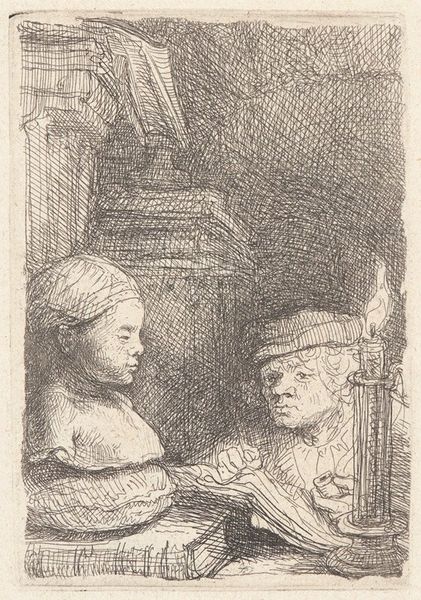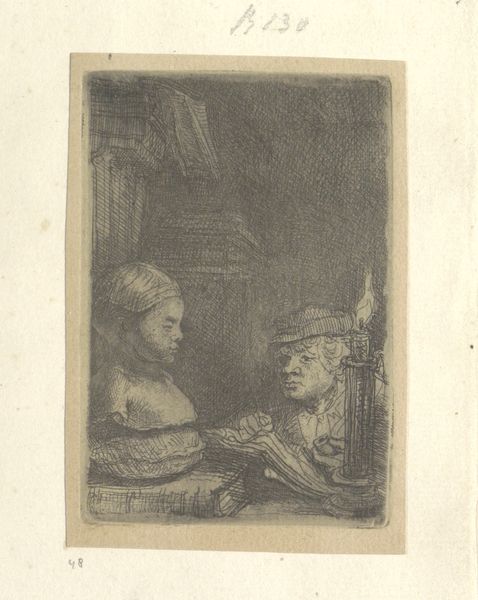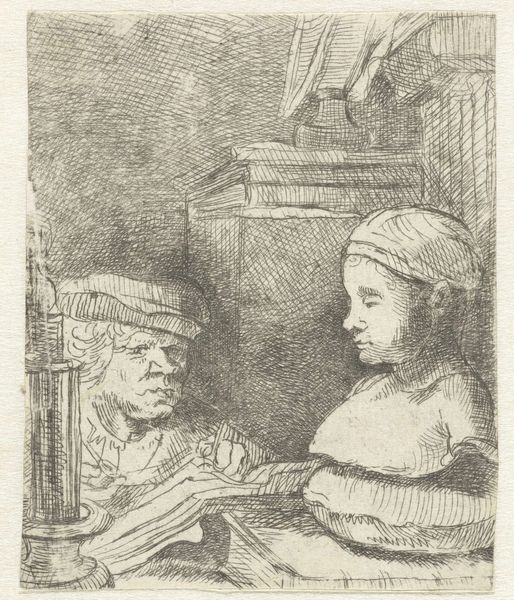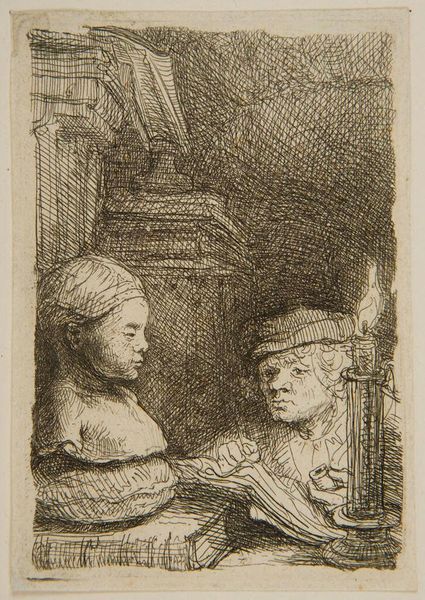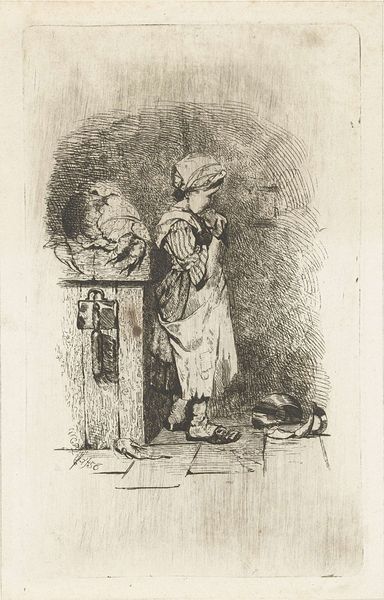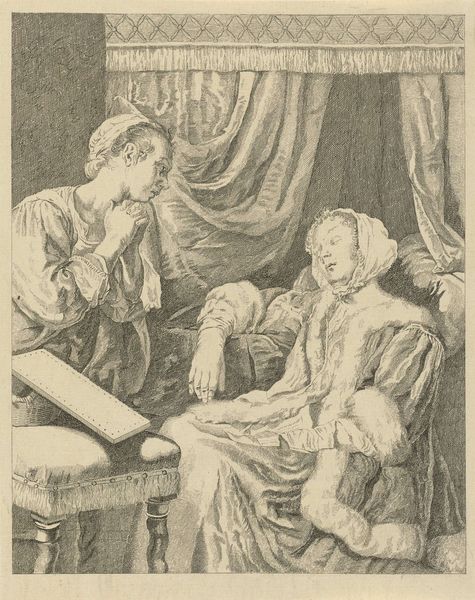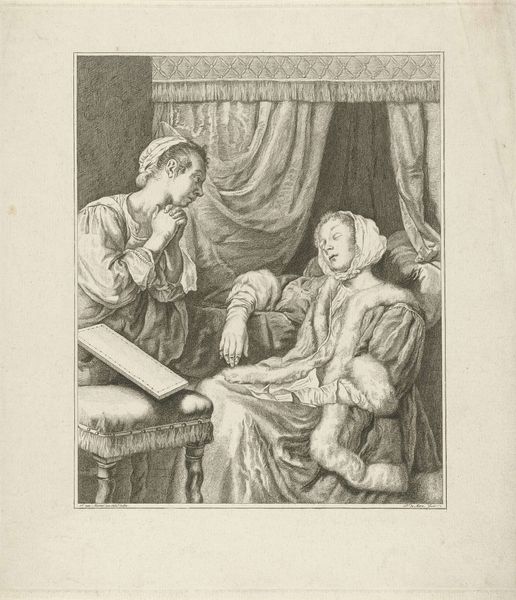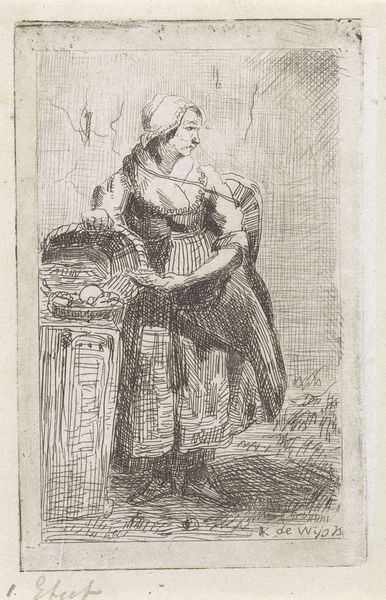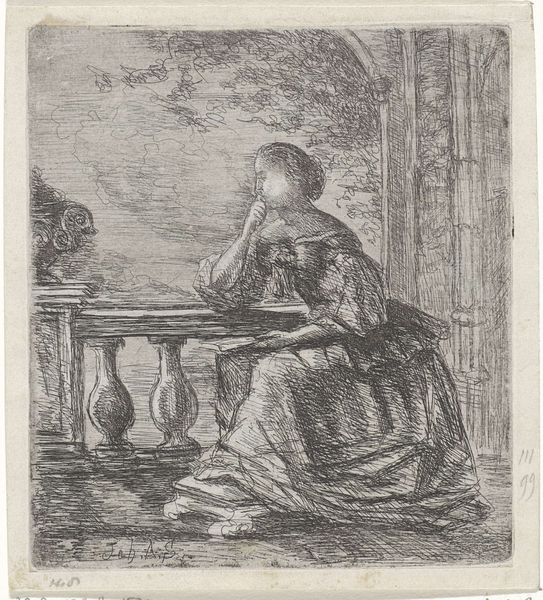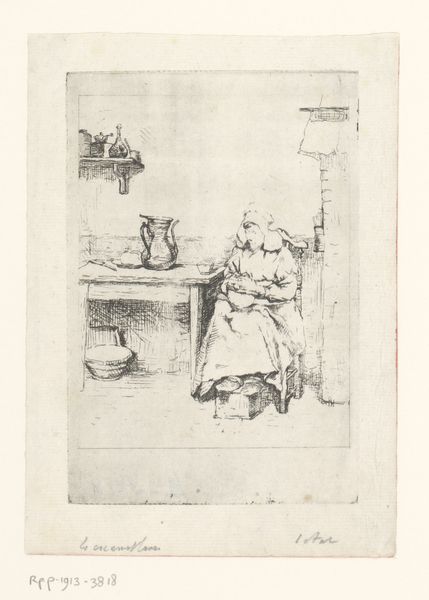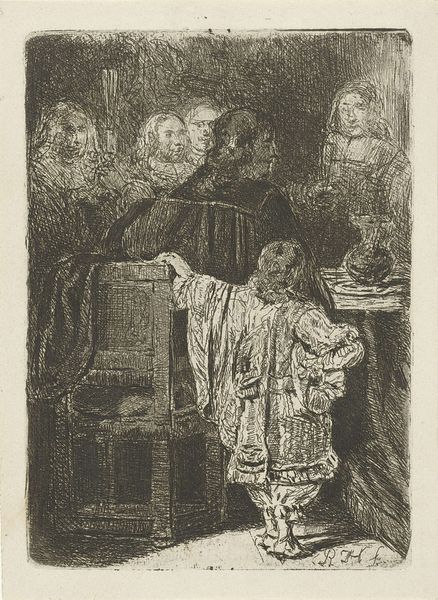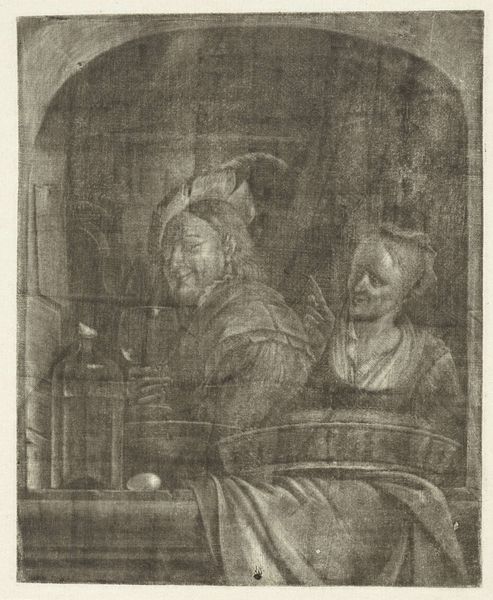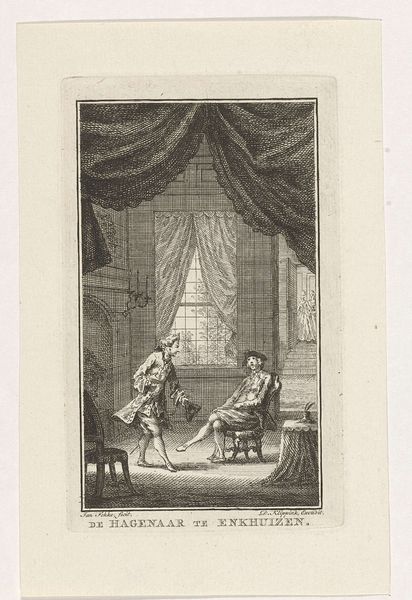
Dimensions: height 93 mm, width 64 mm
Copyright: Rijks Museum: Open Domain
Curator: Here we have Rembrandt van Rijn's "Man Drawing from a Cast," likely etched sometime between 1641 and 1906. Immediately striking is the contrasting darkness surrounding this solitary scene. What’s your first take? Editor: My eye is drawn to that bust. It appears idealized, almost otherworldly, against the harsh realism of the draftsman. It gives off a rather poignant vibe, wouldn’t you say? Like beauty observed but perhaps never fully grasped. Curator: Absolutely, but let’s also look at this from the material point of view. As a print, and likely an etching or engraving, we see Rembrandt wrestling with mass production—art meant to circulate. This wasn't some unique, precious oil painting for a wealthy patron. This image was destined for broader consumption. Editor: That's so interesting. But it feels more intimate than mass-produced, perhaps that’s the chiaroscuro. I almost feel the artist’s breath as he hunches over, trying to capture the cast’s likeness under the flickering candlelight. The whole act feels somehow sacred. Curator: The candlelight’s essential! Remember the workshops and practices of this era. Light was crucial—it shaped not only visibility but the very working conditions, dictating how labor happened. It brings the process out of the realm of pure talent into that of necessity. Editor: Perhaps it suggests something about art’s very origins then. How technical skill and observation, represented by the artist laboring under artificial light, meet the idealized forms of classical tradition, personified in the sculpture. What does it say that he picked this subject? Is this maybe also an indirect commentary on how artistic skill is taught, learned, reproduced? Curator: Interesting, yes. The etching itself is a process of reproduction, so Rembrandt, who mastered chiaroscuro, uses the very medium to explore similar themes and questions, pushing against notions of art existing in this sacred, untouchable realm. Editor: Precisely. In a sense, he's drawing from a cast and making casts of a drawing—a chain reaction. Ultimately, I see in this scene how even in a small, darkened space illuminated only by candlelight, vast ideas about art, labor, and society take form. It reminds us that art making, even centuries ago, was always about ideas, beyond craftsmanship. Curator: Yes, an echo across time! The artist seeking and studying in this particular fashion connects us to something timeless. Thank you for shedding light on this evocative artwork!
Comments
No comments
Be the first to comment and join the conversation on the ultimate creative platform.
